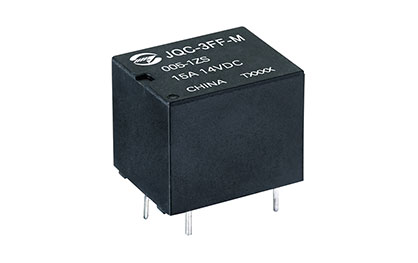
The delay in the relay can be set to a specific time interval, which is usually adjustable using a potentiometer or other control mechanism on the relay. The delay can range from a few seconds to several minutes, depending on the specific application.
In a typical automotive delay relay, a control signal is applied to the relay to activate or deactivate the circuit. The relay then uses a timing mechanism to delay the opening or closing of the circuit. Once the delay time has elapsed, the relay will either open or close the circuit, depending on its configuration.

Improved safety: Delay relays provide a gradual transition when activating or deactivating a circuit, which can improve safety for the driver and passengers. Sudden changes in lighting or other systems can be distracting or disorienting, but a delay relay can provide a smooth transition that is less likely to cause issues.
Enhanced convenience: Delay relays can make it easier to control electrical systems in a vehicle. For example, a delay relay can be used to keep the headlights on for a few seconds after the engine is turned off, allowing the driver to safely exit the vehicle in the dark. Delay relays can also be used to turn off interior lights after a set period of time, reducing the risk of draining the battery.
Increased reliability: By providing a gradual transition, delay relays can reduce wear and tear on electrical components, which can improve the overall reliability of the system. Delay relays can also protect against voltage spikes and other electrical issues that can cause damage to sensitive components.
Customization: Some delay relays are programmable, allowing you to customize the delay time and other settings to meet the specific requirements of your application. This flexibility can make it easier to integrate the relay into your existing system and achieve the desired functionality.

Lighting system control: Delay relays are often used to control the lighting systems in a vehicle. For example, a delay relay can be used to keep the headlights on for a few seconds after the ignition is turned off, allowing the driver to safely exit the vehicle in the dark.
Power window and power seat control: Delay relays can be used to control power windows and power seats in a vehicle. By providing a delay when activating or deactivating these systems, delay relays can reduce wear and tear on the components and improve their overall reliability.
Wiper system control: Delay relays can be used to control the wiper systems in a vehicle. By providing a delay in the activation or deactivation of the wipers, delay relays can prevent sudden or abrupt changes in the system, which can improve safety and comfort for the driver and passengers.
Audio system control: Delay relays can be used to control audio systems in a vehicle. For example, a delay relay can be used to turn off the audio system after a set period of time, reducing the risk of draining the battery.
Engine start control: Delay relays can be used to control the engine start system in a vehicle. By providing a delay when starting the engine, delay relays can prevent damage to the starter motor and other components.
Email:
lilian@zettlernb.comCall Us:
+86-574-62502203Address:
No. 5, Shuntai Road, Yangming Industrial Zone, Yuyao City, Zhejiang Province